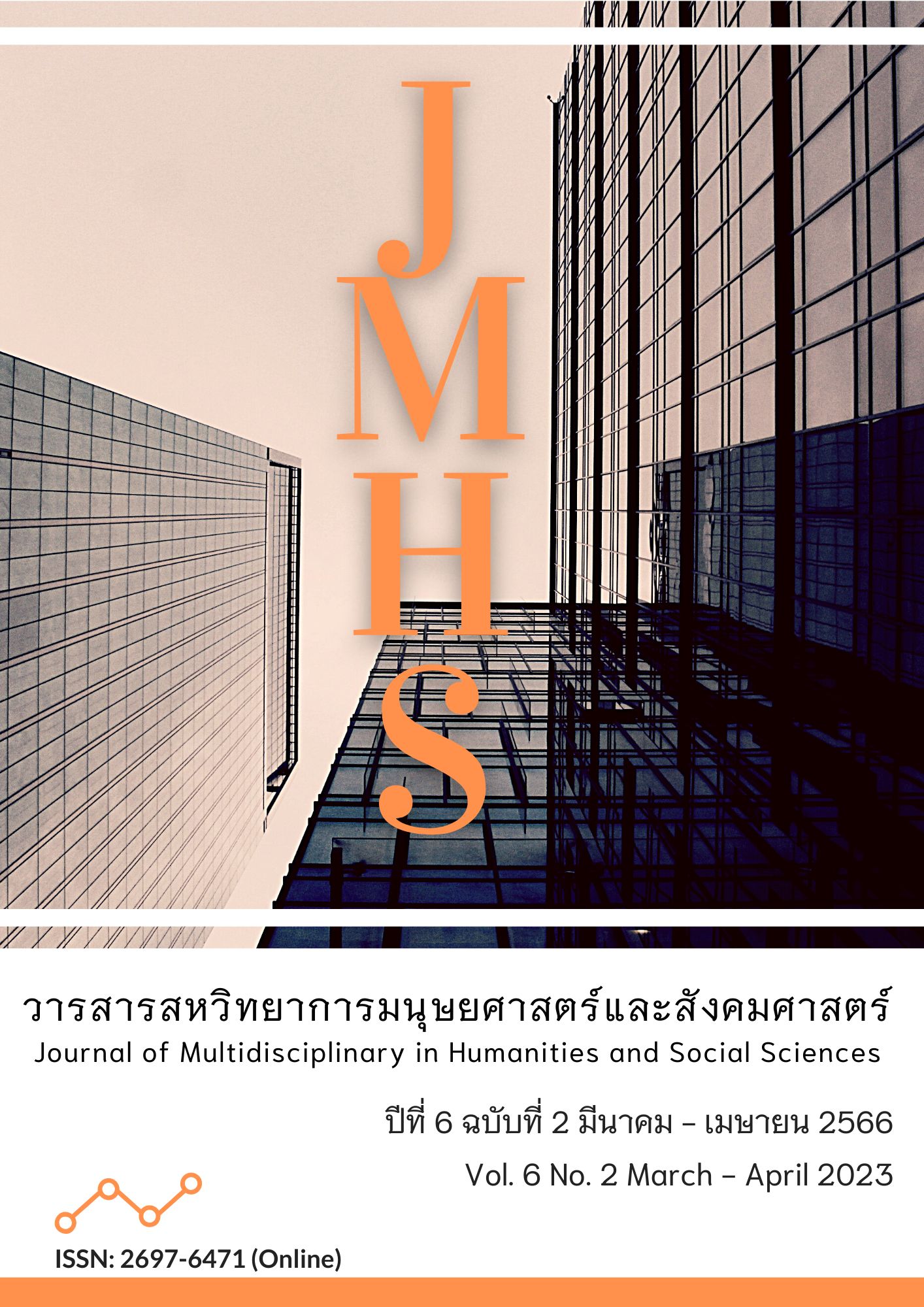แนวทางการป้องกันการเกิดภาวะสมองไหลในการบริหารการจัดการทุนมนุษย์ตามยุทธศาสตร์ Thailand 4.0
Main Article Content
บทคัดย่อ
การสูญเสียคลังสมองหรือบุคลากรที่มีความสามารถเป็นปัญหาที่ท้าทายสำหรับทรัพยากรมนุษย์ในการบริหารทุนมนุษย์ให้คงอยู่ในองค์กร บทความนี้จึงมีวัตถุประสงค์เพื่อสำรวจนิยามของคำศัพท์ สาเหตุของสมองไหล และแนวทางป้องกันสมองไหลในการบริหารทุนมนุษย์ตามยุทธศาสตร์ประเทศไทย 4.0 โดยทบทวนวรรณกรรมและงานวิจัยที่เกี่ยวข้องเกี่ยวกับนิยามความหมาย สาเหตุและแนวทางป้องกันภาวะสมองไหล การศึกษาพบว่าสมองไหลหมายถึงการย้ายถิ่นของแรงงานที่มีทักษะสูงจากที่หนึ่งไปยังอีกที่หนึ่งด้วยเหตุผลหลายประการ: รัฐบาลขาดธรรมาภิบาลทุจริตคอร์รัปชัน ค่าตอบแทนต่ำ โอกาสในการเติบโตในอาชีพ ความไม่มั่นคงในงาน และสภาพแวดล้อมการทำงานไม่ดี แนวทางป้องกันปัญหาสมองไหล ได้แก่ การสรรหาและคัดเลือกคนดี การสร้างและพัฒนาองค์กร และการบริหารค่าตอบแทนเพื่อรักษาบุคลากรที่มีทักษะไว้
Article Details

อนุญาตภายใต้เงื่อนไข Creative Commons Attribution-NonCommercial-NoDerivatives 4.0 International License.
ทัศนะและความคิดเห็นที่ปรากฏในวารสาร ถือเป็นความรับผิดชอบของผู้เขียนบทความนั้น และไม่ถือเป็นทัศนะและความรับผิดชอบของกองบรรณาธิการ
เอกสารอ้างอิง
Amornkitpinyo, P., Amornkitpinyo, T., Satityapong, N., Wongrajit, S., & Thongnuypram, C. (2022). Social Innovation for Quality of Life. Journal of Educational Management and Research Innovation, 4(2), 279–286. Retrieved from https://so02.tci-thaijo.org/index.php/jemri/article/view/259862
Bhumiratana, S., Songkasiri, W., Commins, T., & Grimley, S. (2009). Thailand and brain drain. Maejo Int. J. Sci. Technol, 3(1), 53-59.
Boudreau, J. W., & Ramstad, P. M. (2004). Talent ship and Evolution of Human Resource Management: From Professional Practices to Strategic Talent Decision Science. Los Angeles: University of Southern California.
Boudreau, J. W., & Ramstad, P. M. (2005). Where’s Your Pivotal Talent?. Harvard Business Review, 83(4), 23-24.
Fallah, H. N., Bijani, M., & Parhizkar, M. (2020). Social Pathology of Brain Drain in Yazd Province, Iran: A Grounded Theory Approach. GeoJournal, 85(1), 93-106.
Fombrun, C. J., Tichy, N. M., & Devanna, M. A. (1984). Strategic Human Resource Management. New York: John Wiley & Sons.
Holbeche, L. (2001). Aligning Human Resources and Business strategy. Oxford: Butterworth-Heinemann.
Ighoshemu, B. O., & Ogidiagba, U. B. (2022). Poor Governance and Massive Unemployment in Nigeria: As Causes of Brain Drain in the Buhari Administration (2015-2020). Insights into Regional Development, 4(2), 73-84. https://doi.org/10.9770/IRD.2022.4.2(6)
Khan, J. (2021). European Academic Brain Drain: A Meta‐Synthesis. European Journal of Education. 56(2), 265-278. https://doi.org/10.1111/ejed.12449
Mikovich, G. T. Newman, J. M. & Gerhart, B. (2011). Compensation. (10th ed.). New York: McGraw-Hill.
Ogaboh, A. A., H. T. Udom, & Eke, I. T. (2020). Why Brain Drain In The Nigerian Health Sector?. Asian Journal of Applied Sciences, 8(2). https://doi.org/10.24203/ajas.v8i2.5990
Okafor, C., & Chimereze, C. (2020). Brain Drain among Nigerian Nurses: Implications to the Migrating Nurse and the Home Country. International Journal of Research and Scientific I nnovation, 7(1), 15-21.
Panagiotakopoulos, A. (2020). Investigating The Factors Affecting Brain Drain in Greece: Looking Beyond the Obvious. World Journal of Entrepreneurship, Management and Sustainable Development, 16(3), 207-218. https://doi.org/10.1108/WJEMSD-10-2019-0076
Pfeffer, J. (1994). Competitive Advantage Through People. New York: Harvard Business School Press.
Raveesh, S. (2013). Brain Drain: Socio-Economic Impact on Indian Society. International Journal of Humanities and Social Science Invention, 2(5),12-17.
Reynolds, J. (2004). Helping People Learn. London: Chartered Institute of Personnel and Development.
Shinwari, S. A., Currie, C., & Kumpf, J. (2021). Brain Drain in Global Health. Military Medicine, 186(7-8), 175-177.
Trembly, M. & Chenevert, M. (2005). The Effectiveness of Compensation Strategies in International Technology Intensive Firms. International Journal of Technology Management, 31(3), 222-239. https://doi.org/10.1504/IJTM.2005.006632
Visetsak, K. (2009). Reverse Brain Drain Project: from Brain Drain to Brain Circulation. Journal of HRintelligence, 4(1), 4-6.
Wanniarachchi, H. E., Jayakody, J. A. S., & Jayawardana, A. K. L. (2022). An Organizational Perspective on Brain Drain: What Can Organizations Do To Stop It?. The International Journal of Human Resource Management, 33(8), 1489-1525. https://doi.org/10.1080/09585192.2020.1758745


